Egeria identification and control
About this weed
Egeria is a regulated Class B noxious weed. This means control is required in King County under state noxious weed law. King County waterbodies that are excluded from this regulation are lake Dolloff, lake Fenwick, lake Union, lake Washington, lake Sammamish, and the Sammamish River.
Egeria is also on the Washington quarantine list, and it is illegal to buy, sell, or offer it for sale in the state.
Egeria is known as Egeria densa and it is in the frogbit family. Other common names for egeria are Brazilian elodea, Brazilian waterweed, and South American waterweed.
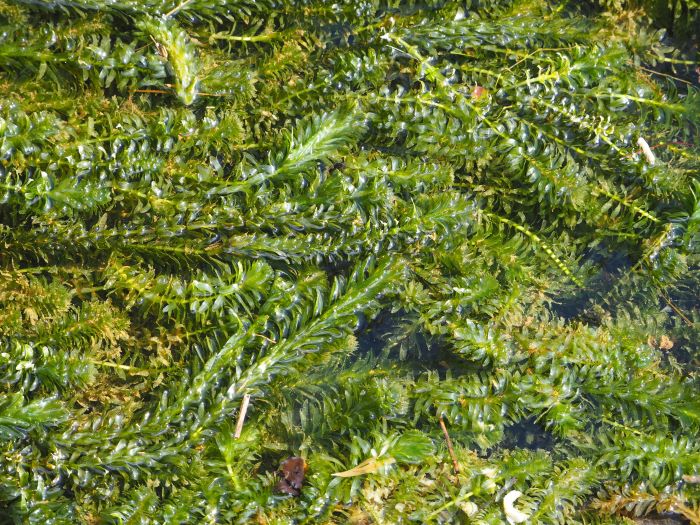
Why it's a problem
Egeria plants grow almost entirety underwater in freshwater lakes, rivers, and streams. Egeria tends to form dense, one-species stands that can cover hundreds of acres. The plant reduces structural and plant species diversity in lakes and rivers. Egeria can affect moving water such as rivers. The plant can raise the water level and reduce the amount of dissolved oxygen available to fish.
Egeria has spread into several lakes in King County, including Lake Washington and Sammamish. State officials in Oregon consider egeria to be their worst aquatic plant problem. In King County, most small lakes and waterways are still free of this weed.
Plant description
Egeria is an underwater freshwater perennial (2+ year lifecycle) plant that forms dense stands. The plant lives in still and flowing waters up to 20 feet deep. Stems grow individually until they get closer to the surface where they will sometimes branch. Floating mats of the plant can slightly break the water's surface.
Smooth-edged leaves grow in groups, making a cylindrical shape, with 4 or 6 leaves per whorl/group. Individual leaves range from 2-4 cm long. The plant produces small white 3-petaled flowers that float on or rise above the water's surface in spring to late summer. The plants we have found in Washington do not produce seeds, instead they reproduce exclusively by growing from fragments of their stems and roots. Identifying egeria can be tricky, so be sure to get an expert to confirm the species before planning any control measures.
Native to Brazil and Argentina, egeria is a popular aquarium plant often sold in pet stores and available in school science kits under the name Anacharis.
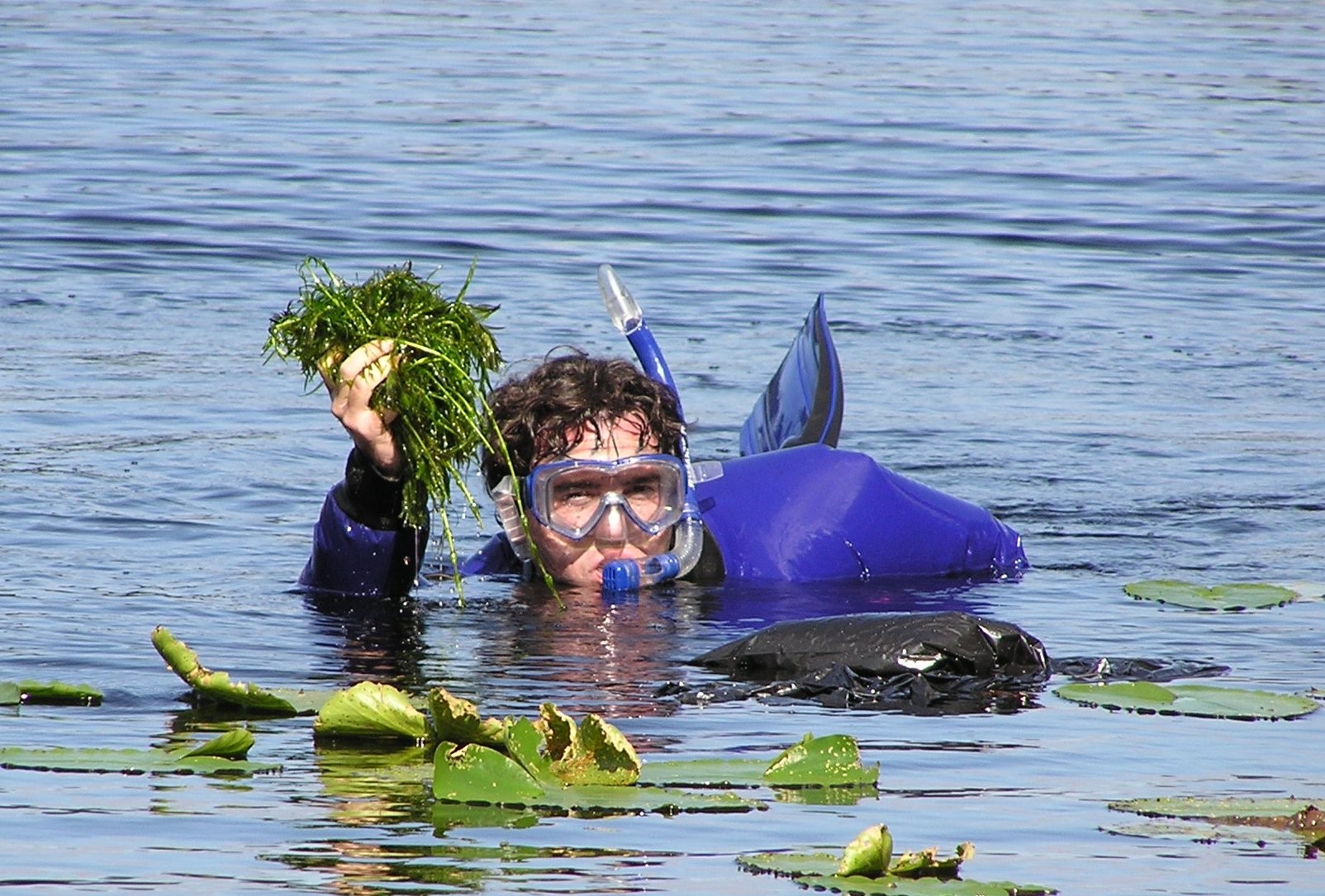
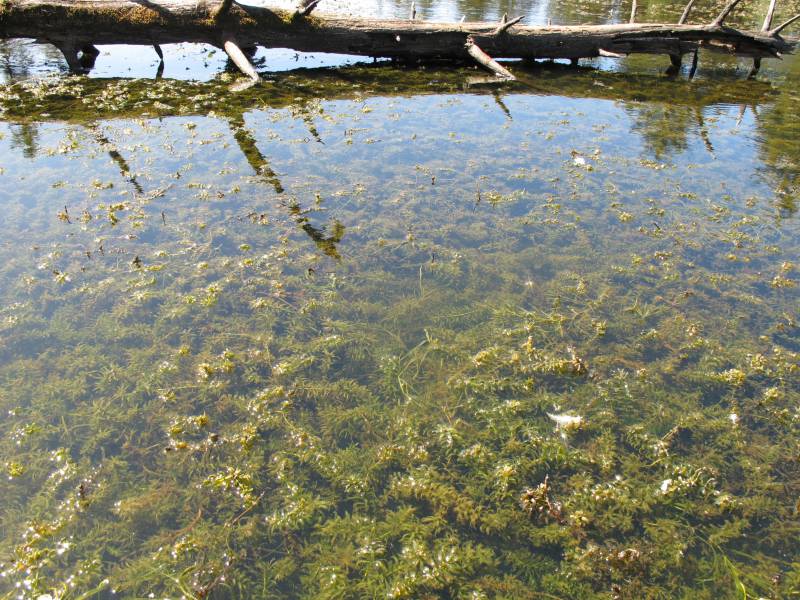
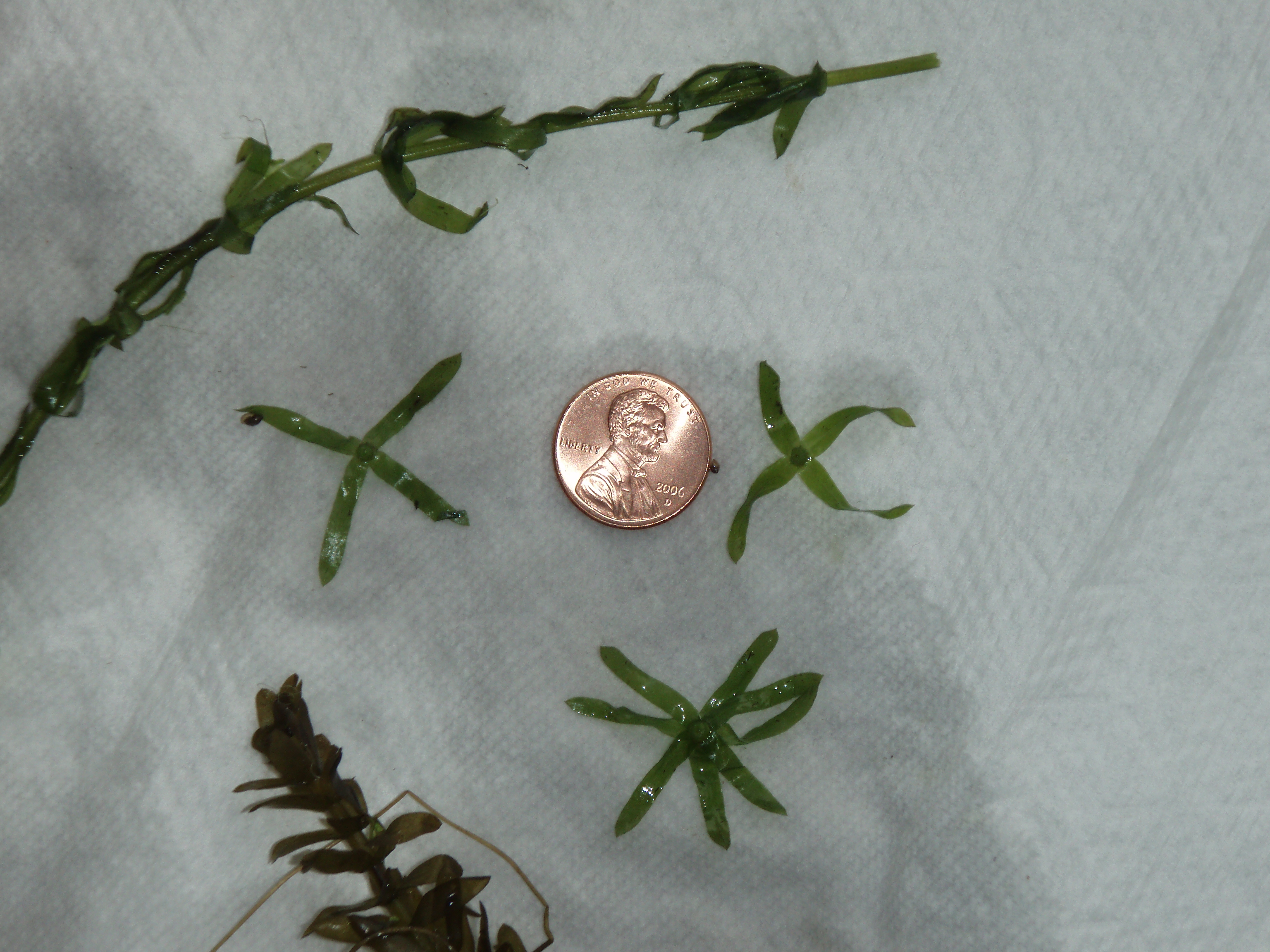
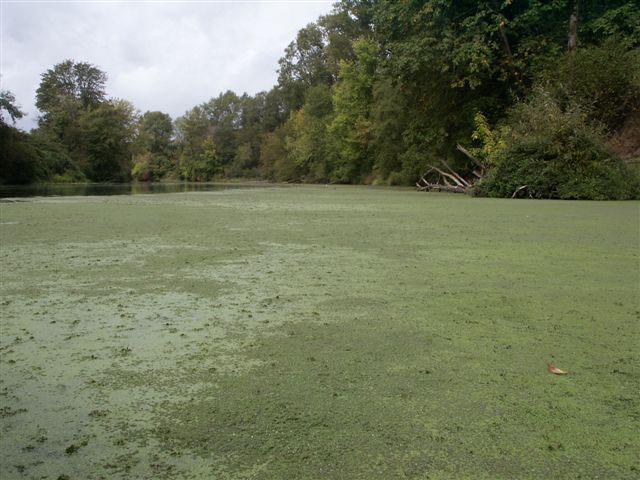
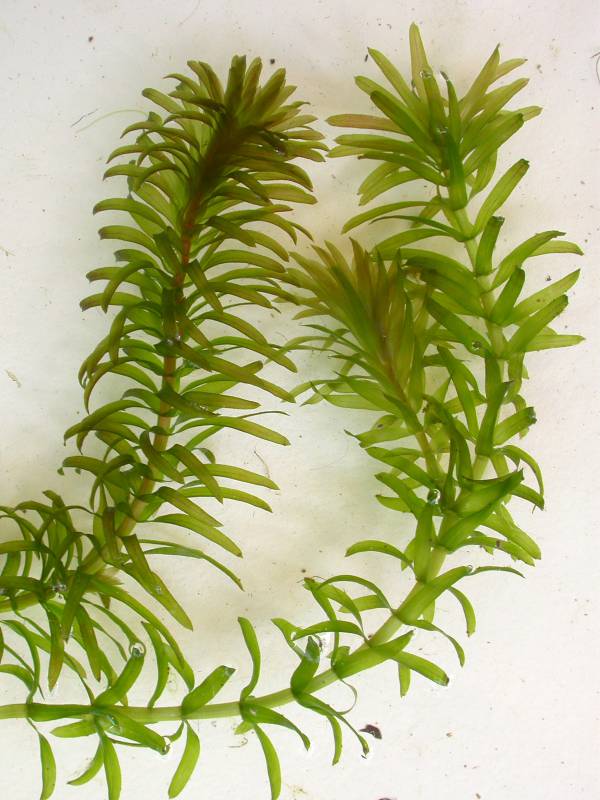
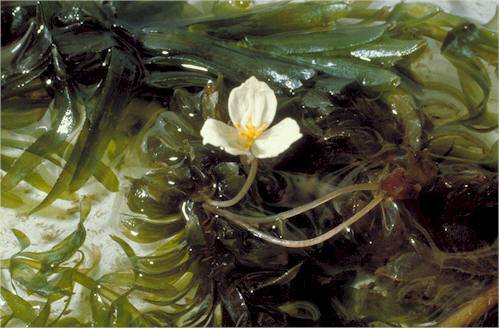
Be aware of look-alike plants
Egeria is often confused with:
Elodea or common waterweed (Elodea canadensis), a native plant. Differences: egeria's stems look very leafy compared to those of the native elodea. Also, the native elodea has shorter leaves (0.5-1.5 cm long) in a whorl of three, instead of 4 or 6 like egeria. See photo below for a side-by-side comparison.
Hydrilla (Hydrilla verticillate), a very rare and high priority Class A noxious weed. Differences: hydrilla has leaves that are spinier and in whorls of five. Hydrilla also has tubers (sweet potato-like roots) unlike egeria or elodea.
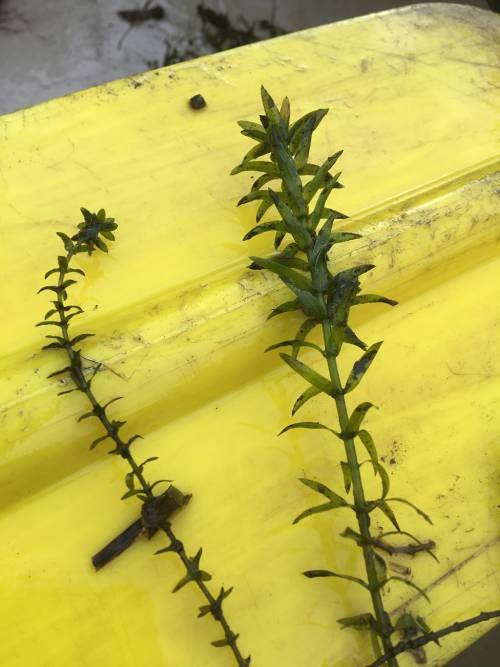
Common waterweed (Elodea canadensis) a native plant on the left, egeria (Egeria densa) on the right.
When in doubt, take photos and share them with us or report them on iNaturalist.
What to do if you find it
Property owners are required to control egeria on lands that they manage. Please notify us if you see egeria growing in King County. Our program staff can provide the property owner or appropriate public agency with site-specific advice on how best to remove it. We map all known locations of regulated noxious weeds such as egeria in order to help us and others locate new infestations in time to control them.
This plant is often distributed through movement of watercrafts and water related equipment. Make sure you inspect your watercraft at the boat launch before entry and after exit to avoid spreading any invasive or nuisance aquatic plants or animals. See King County’s boating information web page for more information.
Control methods
We recommend using a combination of methods to control noxious weeds. In areas with few weeds, it is important to act quickly before they become harder to control. Make a long-term plan as it often takes several years to get rid of most weeds. Start in the least infested areas first and then move into more heavily infested areas.
For more in-depth control information, read our Best Management Practices (BMP) for Egeria
Prevention
Egeria may be sold as an aquarium or water garden plant so be sure to check the scientific name of all plants before purchasing them, especially through the internet where companies may not be aware of Washington state laws. Never dispose of unwanted aquatic plants in waterways. If you do spot this plant growing in a new place, be sure to quickly notify the King County Noxious Weed Program so action can be taken.
Manual control
Aquatic plant control that does not involve herbicide often requires a (free) permit. The rules and regulations for this type of removal will depend on your circumstance, please visit the WA Dept Fish and Wildlife for access to their Aquatic Plants & Fish Pamphlet and guidance on how to use it properly.
Egeria can be hand-pulled. The entire plant plus its roots must be removed to be effective. Deep water work will require diving gear. This strategy works best on small infestations.
Mechanical control
Egeria can be suctioned harvested by divers. The entire plant plus its roots must be removed to be effective. This activity will increase turbidity and lower water quality for a short period of time.
Chemical control
Stay safe when using herbicide:
- Always read the label before use.
- Wear a long-sleeved shirt, long pants, shoes, and eye protection.
- Follow state and local regulations.
The herbicide fluridone is effective on egeria, although multiple years of application are needed for complete control. See the BMP document linked above the “manual control” section for the most up to date and specific method for chemical control of egeria.
Avoid spraying where there is a chance that herbicide will enter a waterway or wetland unless you are using a state-approved aquatic herbicide and have the required permits and licenses to do so. Use of pesticides in water is regulated in Washington state. See Washington Department of Ecology Aquatic Pesticide Permits for details.
For more information or a site-specific recommendation in King County, contact the noxious weed program. For information in other locations, contact your local weed board or extension office.
Disposal instructions
Manual/mechanical removal is not recommended. If you are only dealing with a few plants and manual removal is realistic, dispose of all plant parts in garbage.
Noxious Weed Disposal - Washington State Noxious Weed Control Board

 Translate
Translate